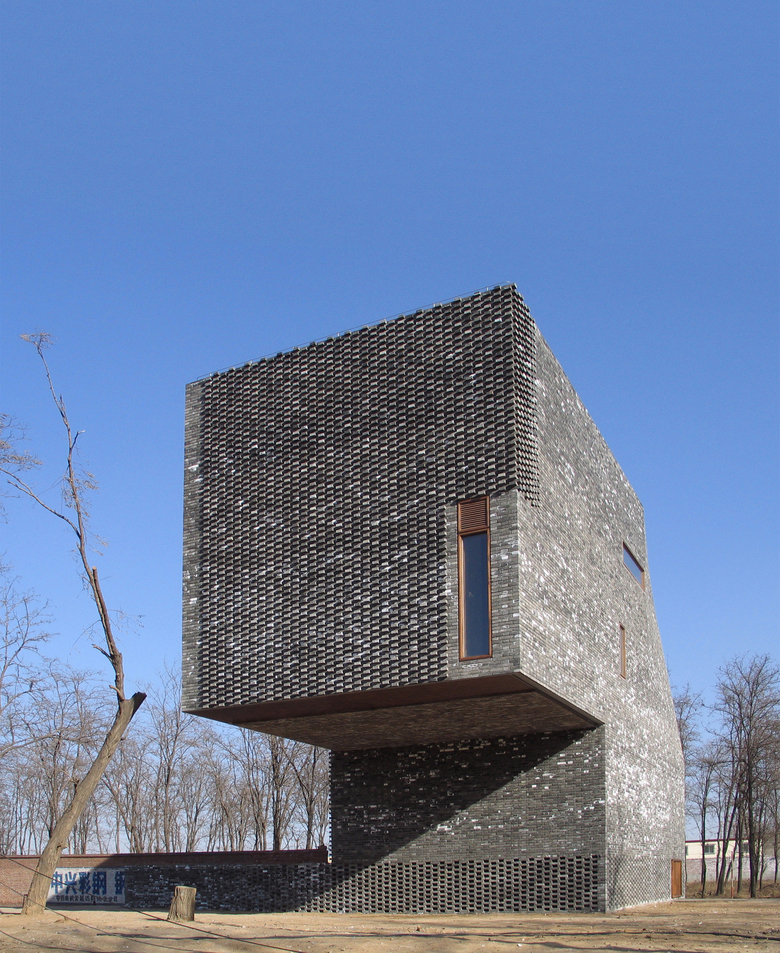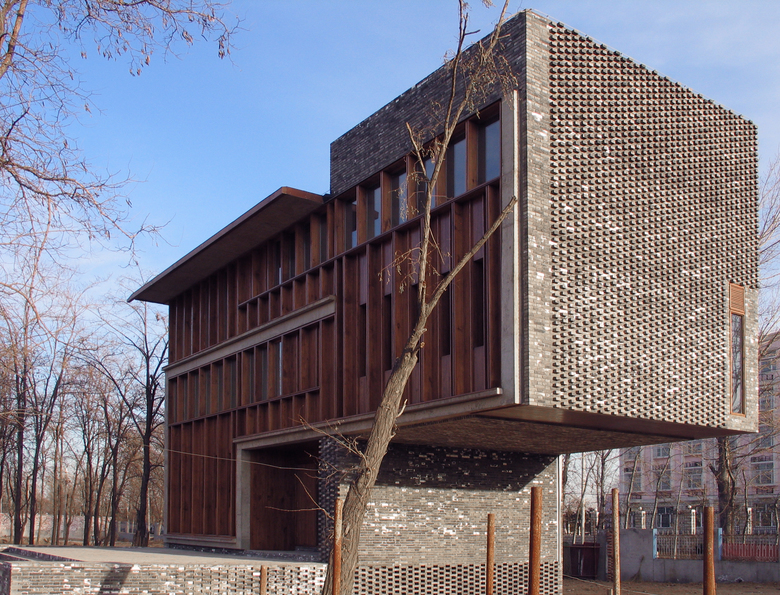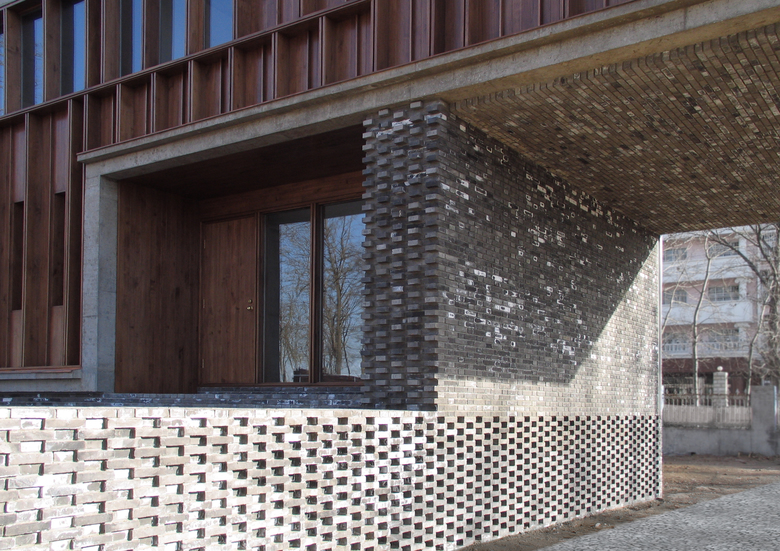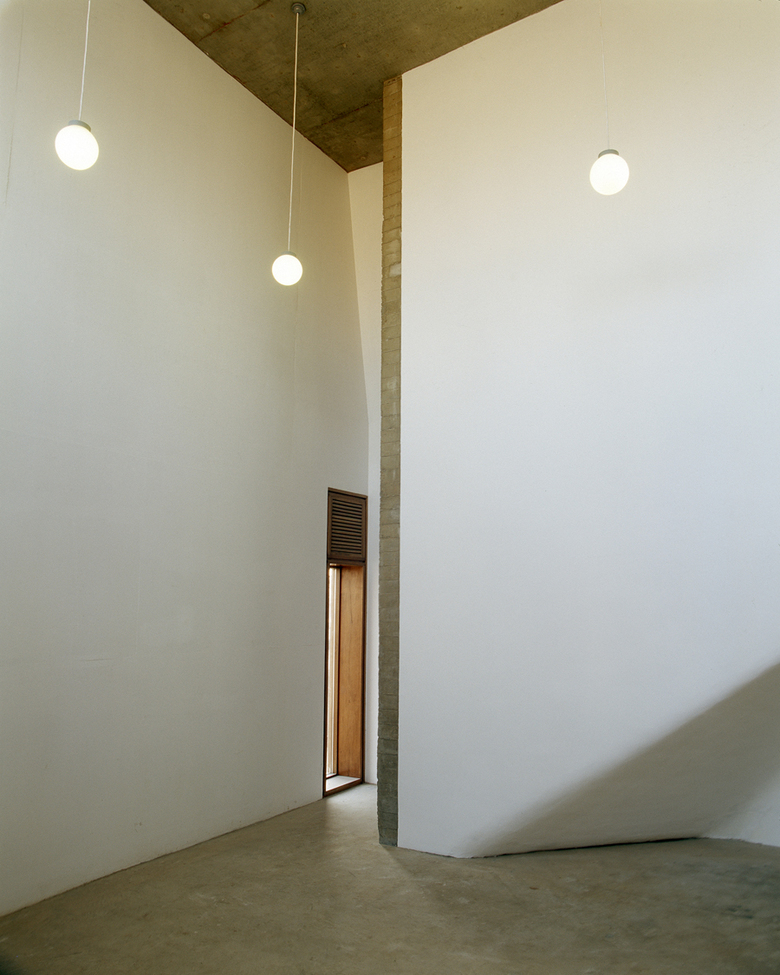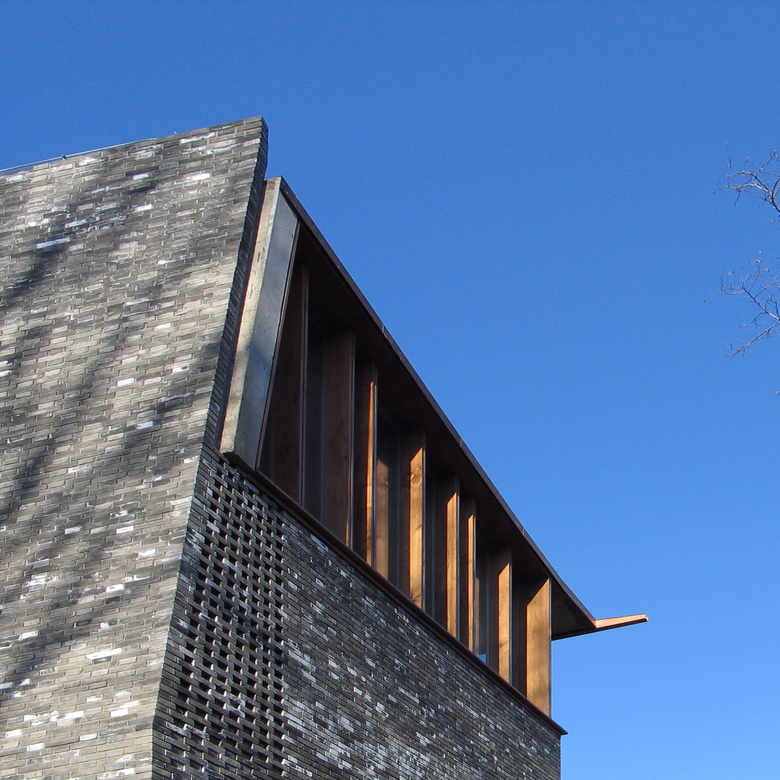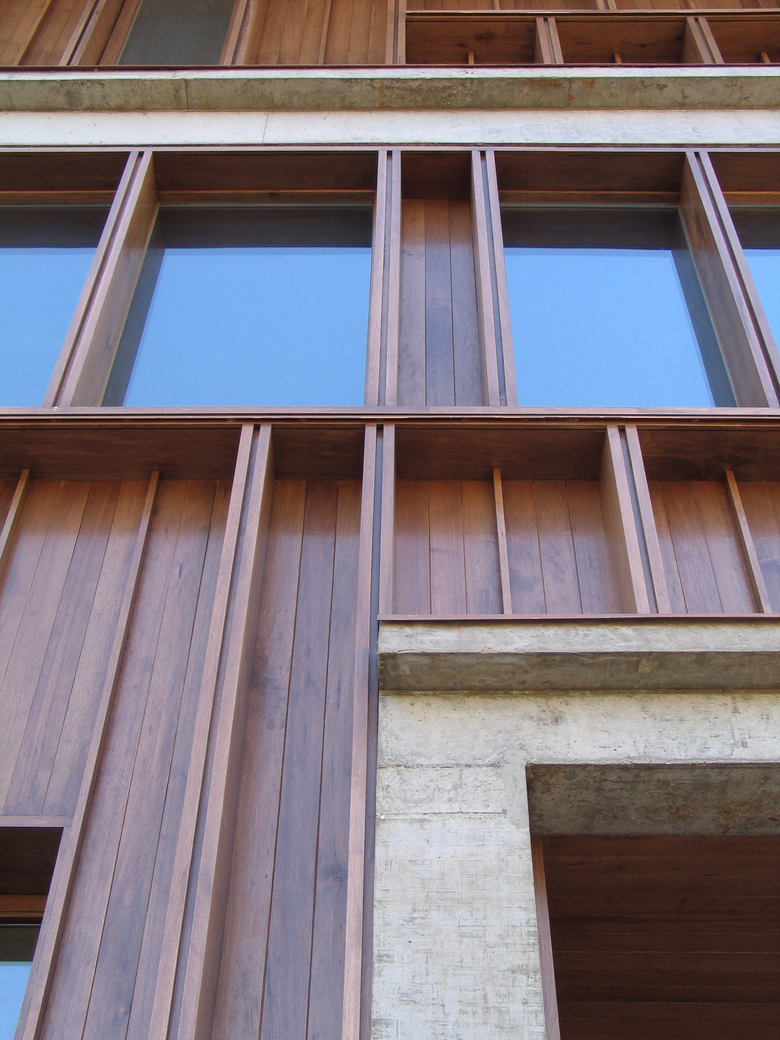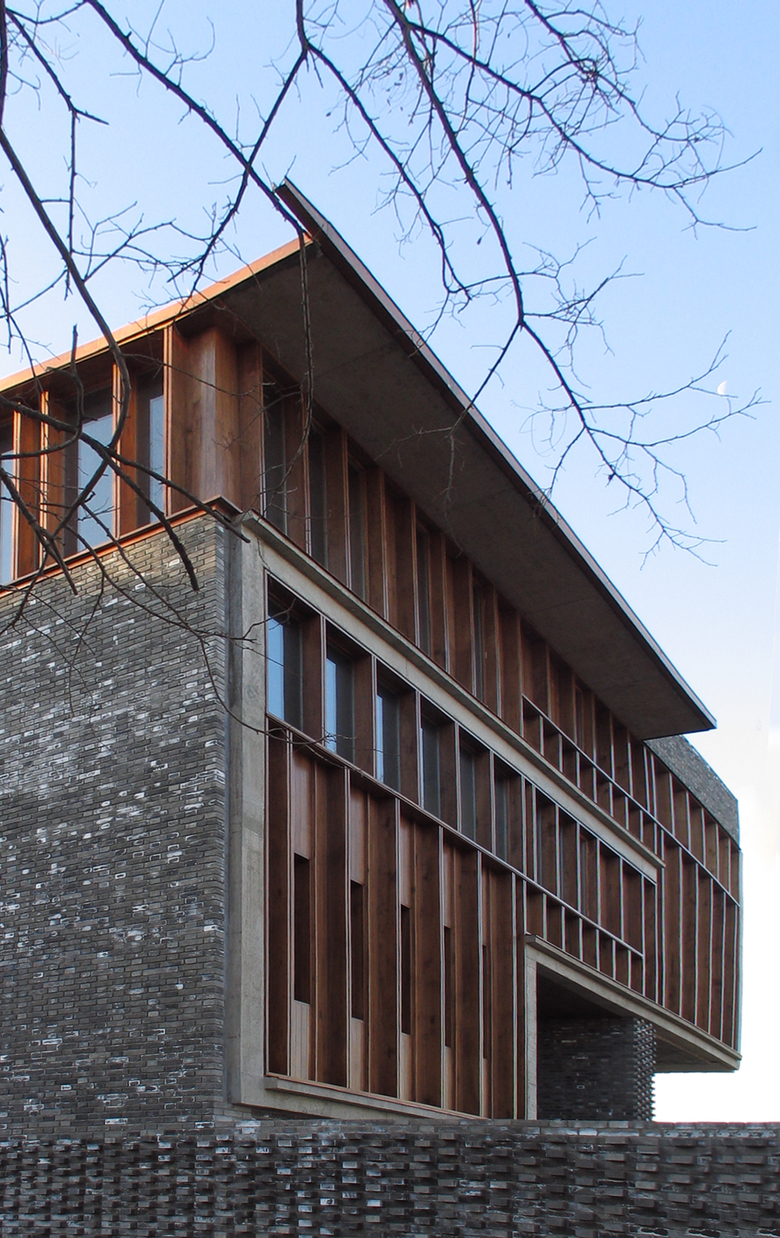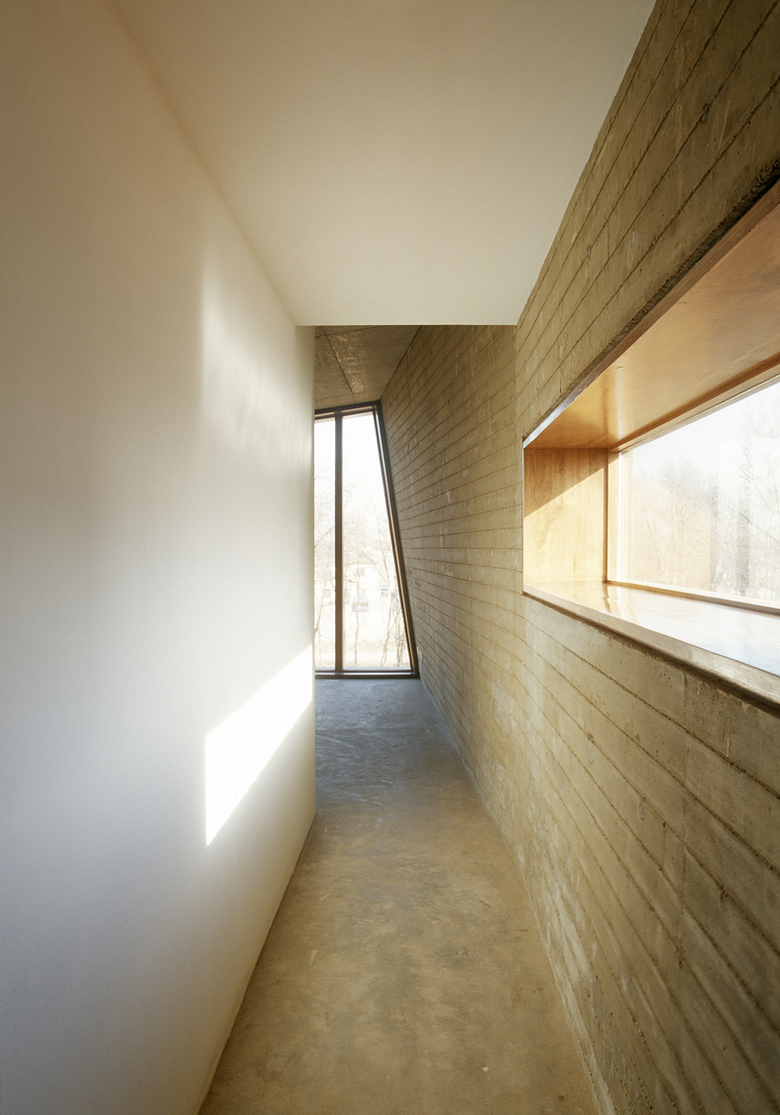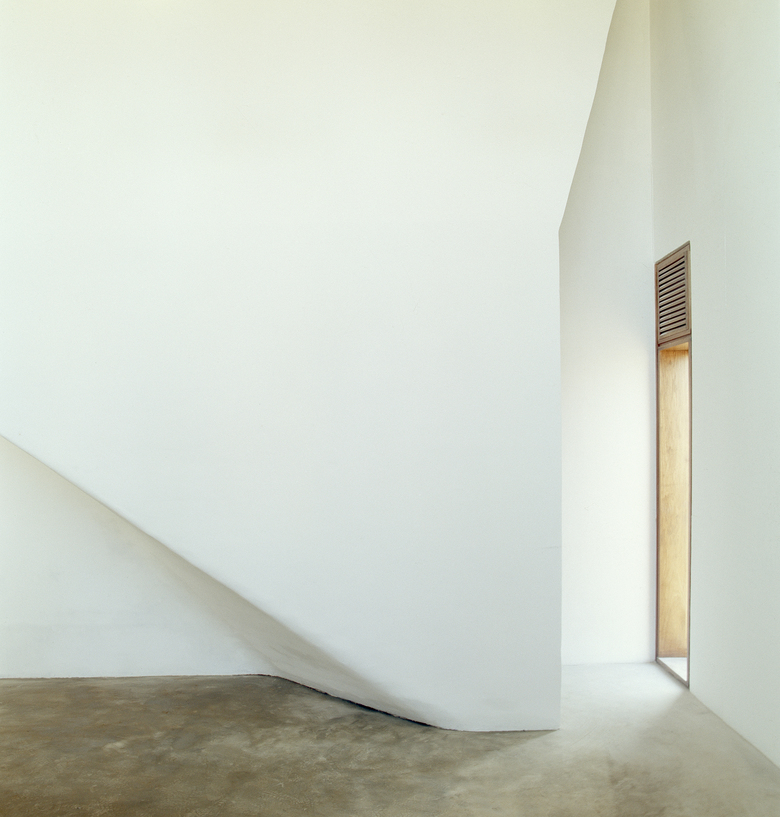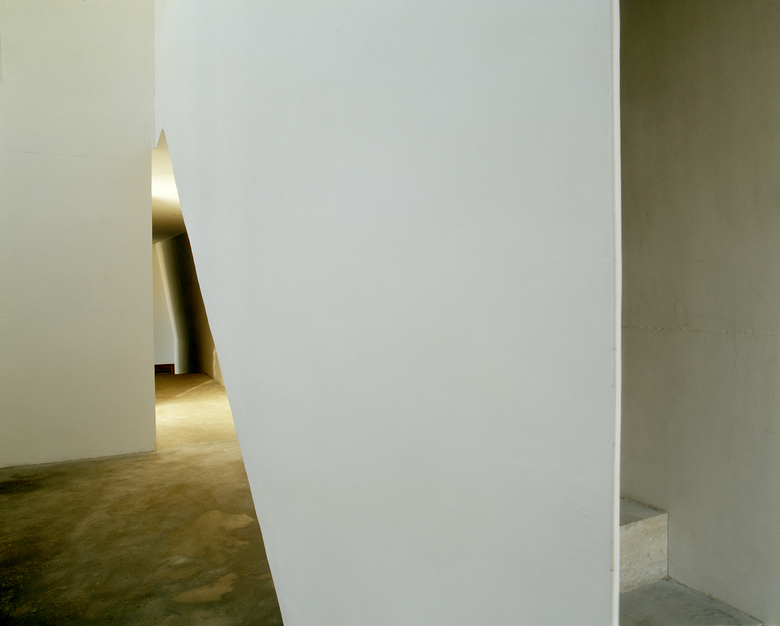Tongxian Gate House
Beijing, China
- 建築家
- NADAAA
- 場所
- Beijing, China
- 年
- 2003
Thirty miles from Beijing, a community of over 200 Chinese artists of international recognition lacked a public institution or space that served as a magnet for interaction, a place for the presentation of art, or a setting for receptions. A consortium of artists, critics and agents acquired a property to put together a program for Tongxian Art. A multi-phase project, the completed Phase 1 is the gatehouse, which consists of housing and studio space for artists-in-residence. Phase 2, the art center, houses the galleries, public spaces, sculpture courts, administrative spaces and infrastructural needs of the institution.
The site is divided by an existing brick wall, which separates a grid of trees on one side from a barren industrial field on the other. While the art center is located on the industrial side, the scheme orients the main public court towards the trees, making a cut into the brick wall to frame a view of the landscape. The complex is configured around a dense series of courtyards that organize spaces of arrival, service, sculpture, and congregation –as well as private outdoor spaces. A series of alleyways, configured as cracks and slots, connect the courtyards. As mandated by the client, the layout of the program is organized to achieve contradictory aims: maximum interaction between the inhabitants, and a level of privacy.
Mandates of circulation, drainage, and light provided an opportunity to invent new spatial and tectonic variations on traditional architectural problems. By calculating the necessary headroom for passageways, the necessary tread and riser relationship of the stairs, and the minimization of any other subsequent wasted adjacent space, the buildings are conceived as brick monoliths that have been shrink-wrapped or vacuum formed into shape. The techniques adopted for this design bear a critical relationship with what was possible with the given budget and economy in China. With labor being relatively inexpensive, it was possible to achieve a higher level of constructional complexity, yet with the high cost of materials, Office dA opted for the use of local gray brick and Chuzumu wood.
関連したプロジェクト
Magazine
-
The Boulevards of Los Angeles
1 day ago
-
Vessel to Reopen with Safety Netting
1 day ago
-
Swimming Sustainably
2 day ago
